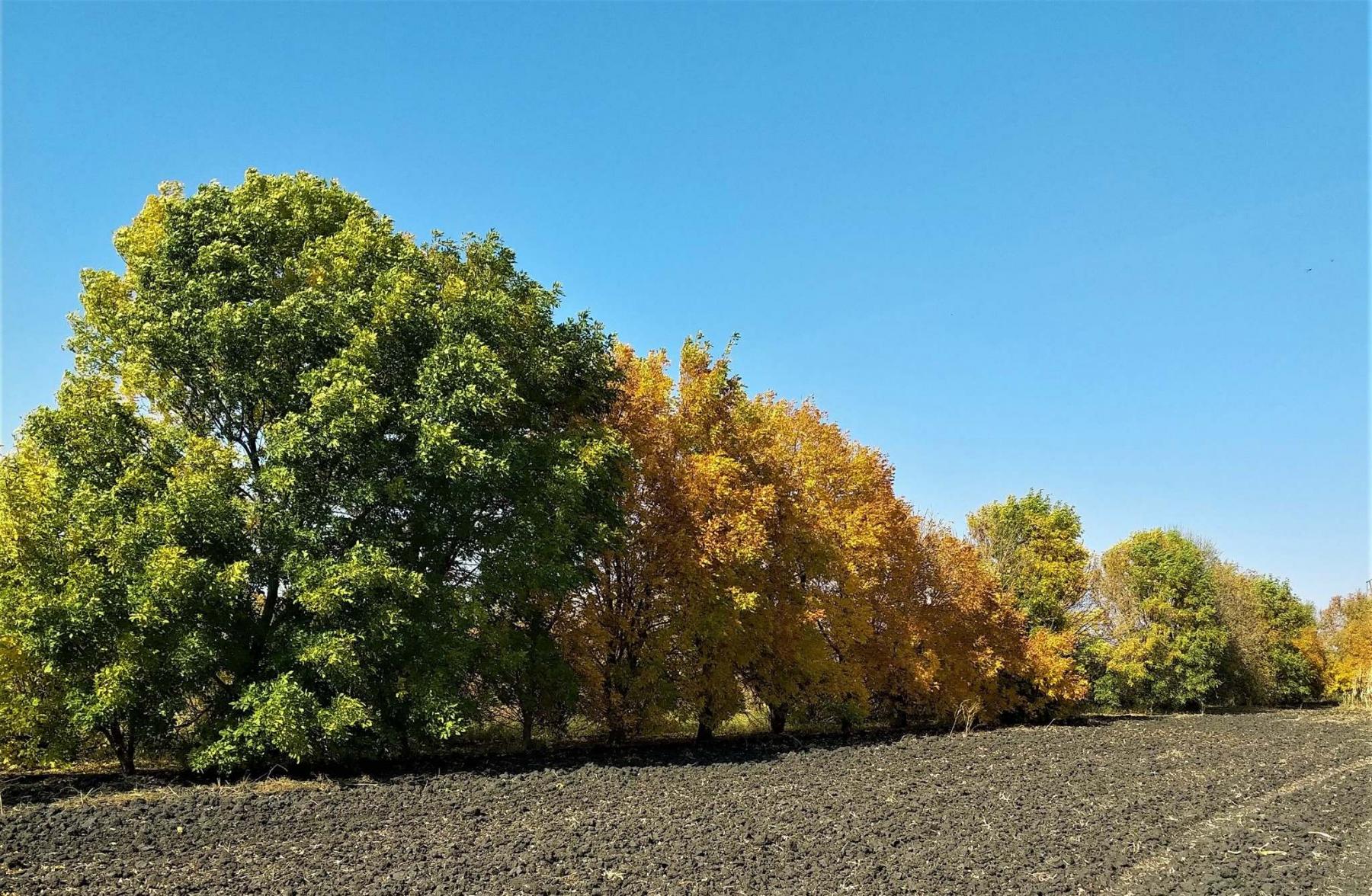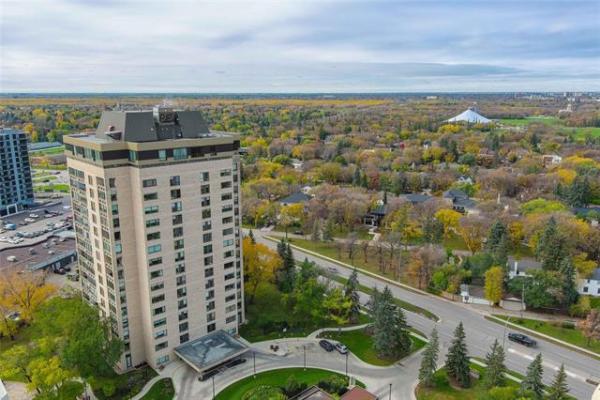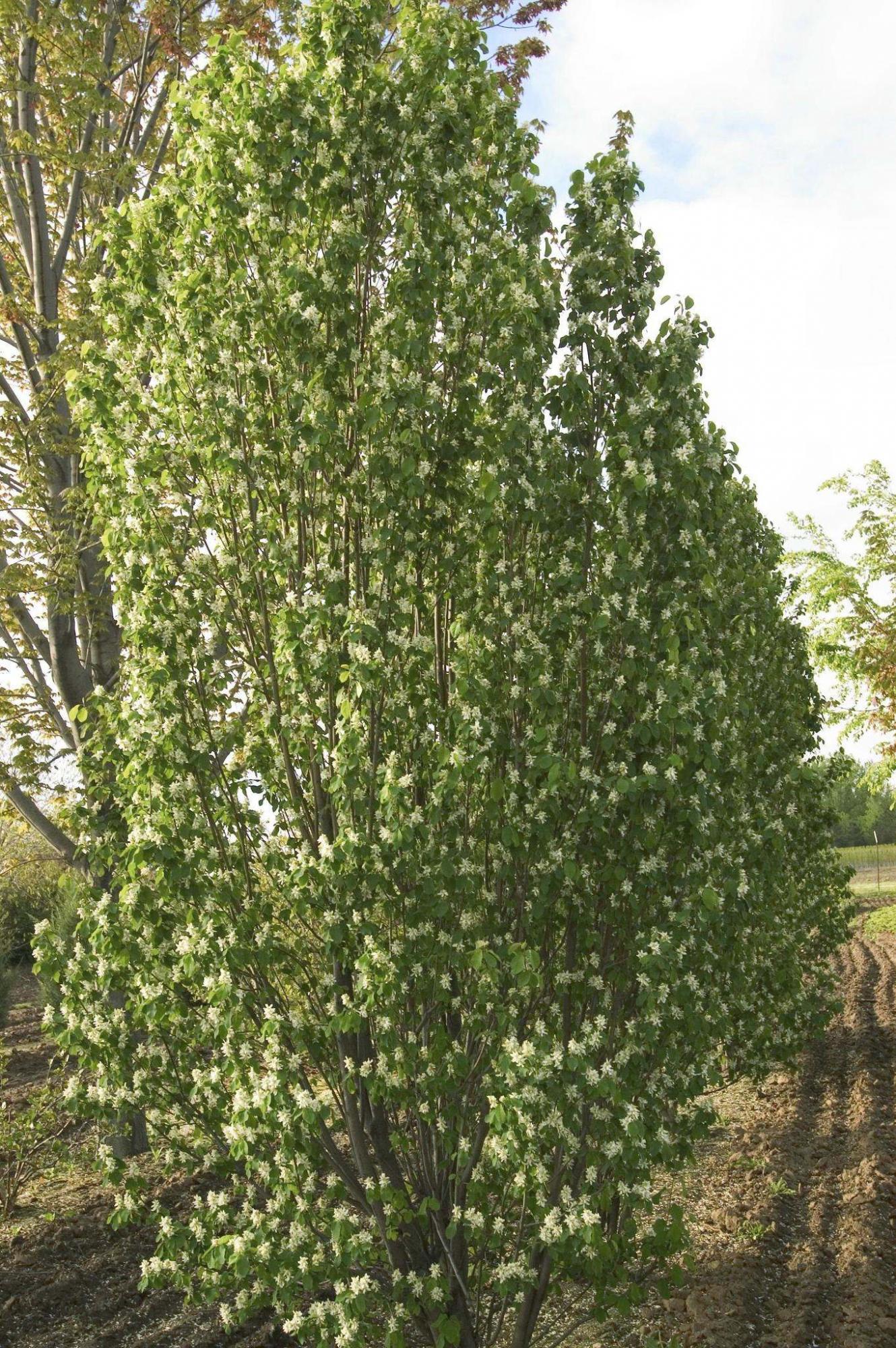
Bailey Nurseries
Serviceberry aka Saskatoon is ideal for screening or shelterbelts. Flowers, fruit, and fall colour, too.
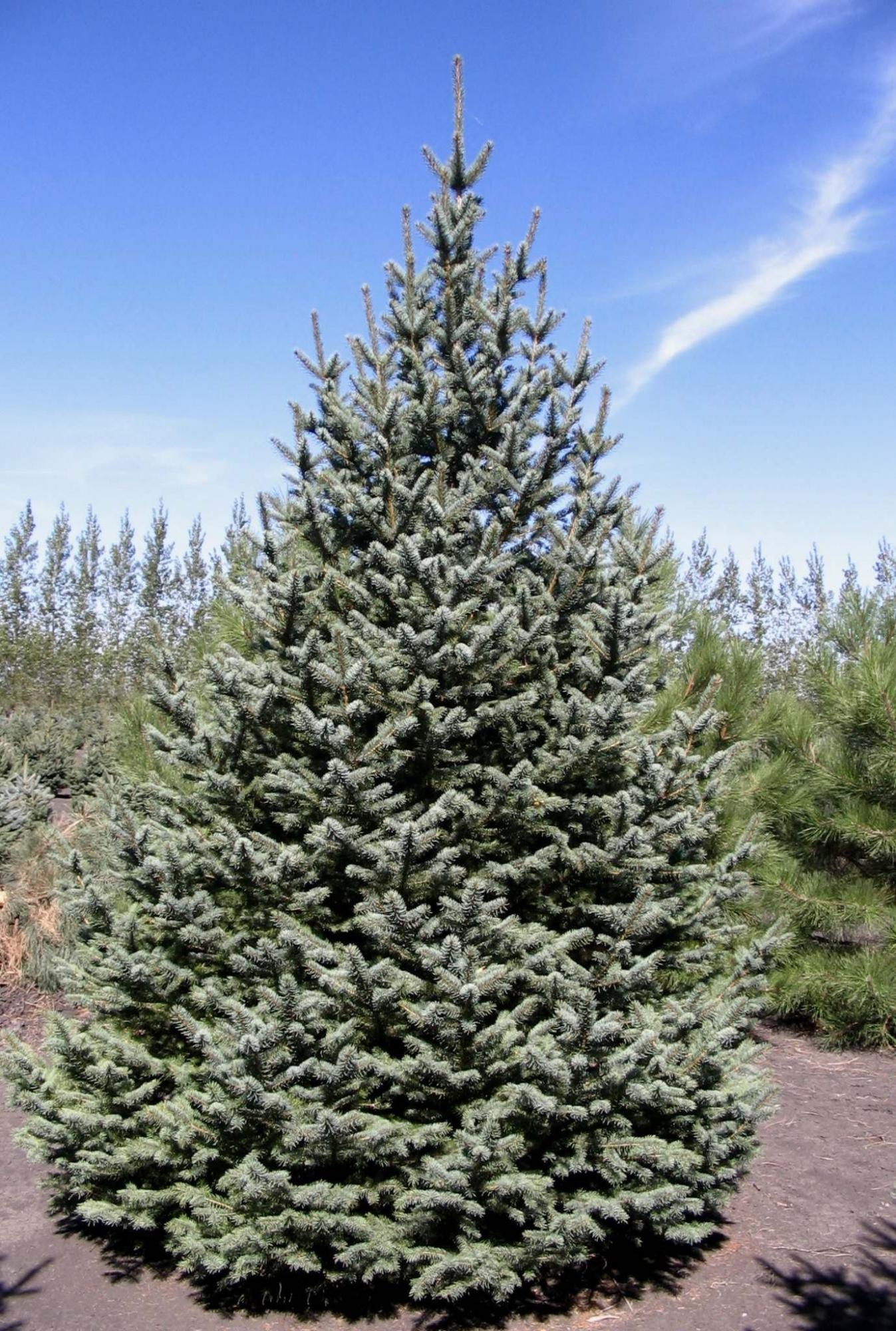
Dave Klassen
Gimme shelter: Meyer’s Spruce is long-lived and deer resistant.
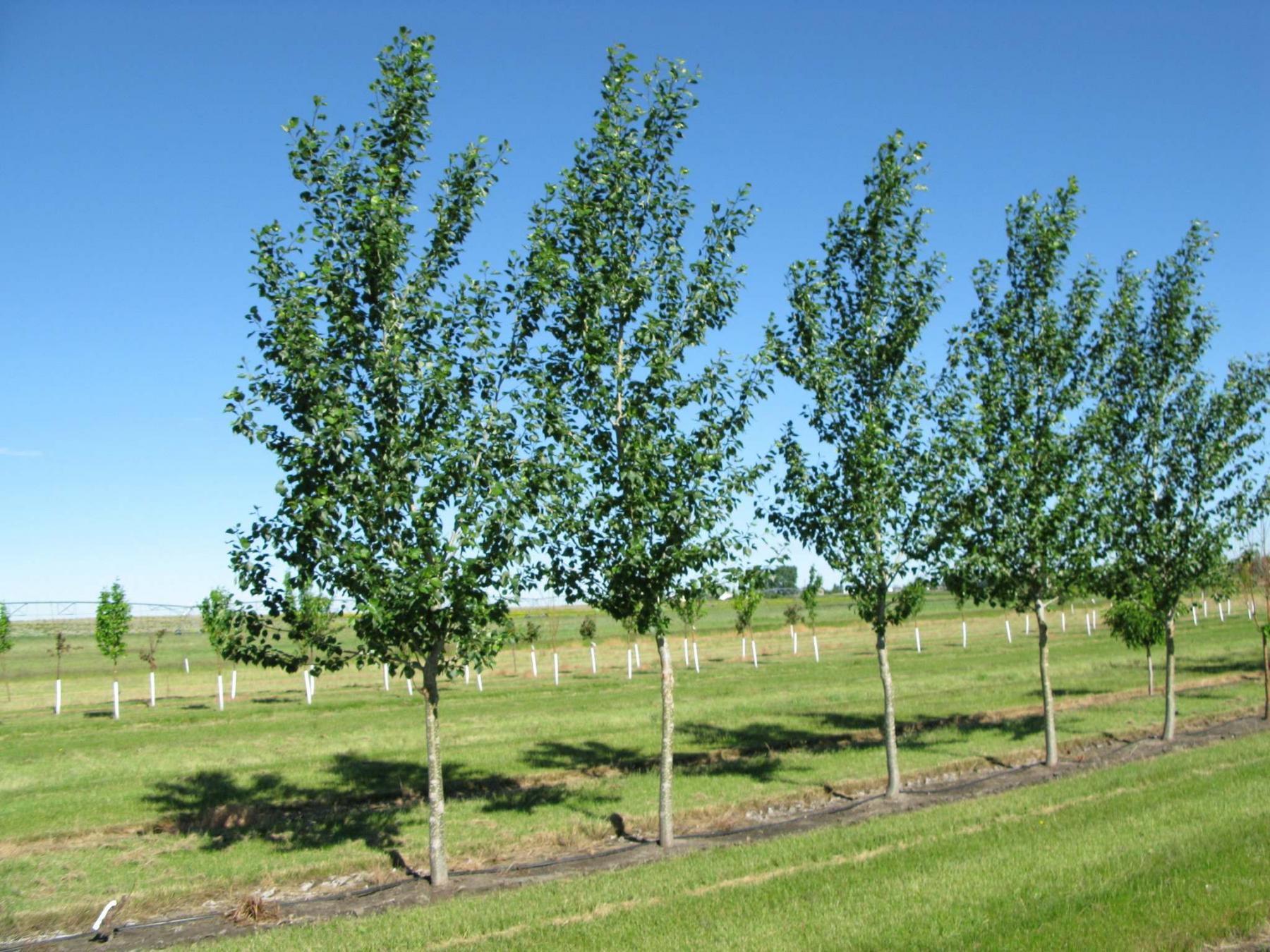
Rick Durand
Okanese poplar appears to be the poplar of choice but combine it with a mix of diverse species.
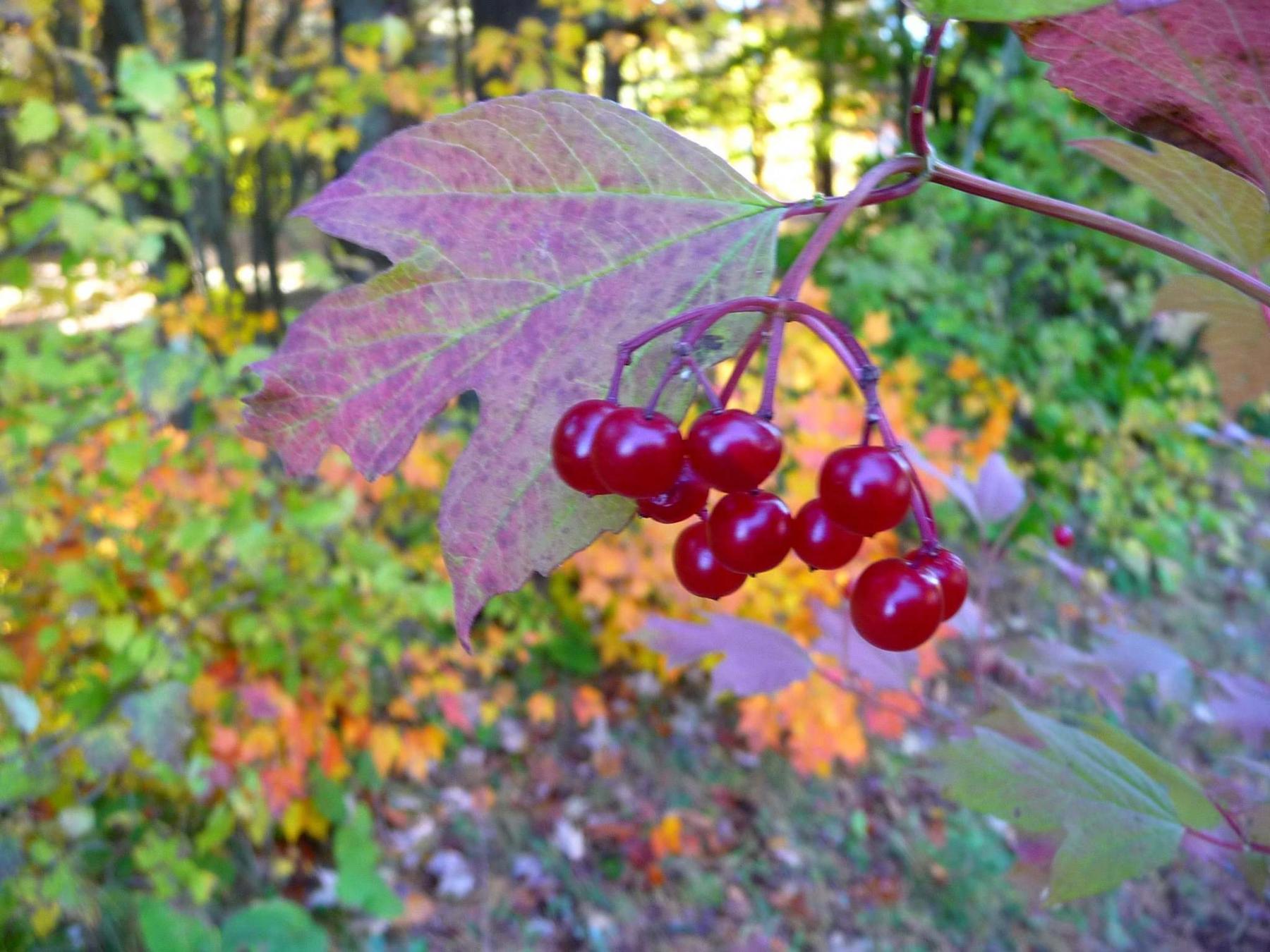
T & T Seeds
Plant an eco-buffer, like Highbush Cranberry, to provide pollinator habitat and edible fruit.
Decades before the proliferation of tree planting challenges by municipalities around the world, Richard Warkentin has been on a mission to challenge people to plant trees. Warkentin lives in the Rural Municipality of Stanley, an area that surrounds Morden and Winkler, two of the fastest growing communities in southern Manitoba. Warkentin is a technician at Stanley Soil Management Association (SSMA) which has planted more than 600 miles of trees in the RM of Stanley since 1984.
"In the heyday of planting from 1985 to 1994, over 37 miles were planted with trees each year," says Warkentin. "In the past 26 years, from 1995 to 2020, SSMA has averaged about 8.5 miles of field shelterbelts per year. There was an average of 1,181 trees planted per mile."
It adds up to hundreds of thousands of trees. As astonishing as this sounds, keep in mind that most of the trees at the time of planting were bare root seedlings ranging in size from 30 to 60 cm tall. Planted as shelterbelt trees for farms, acreages, or commercial field operations, some of the trees have since died or been removed over the years but the ones that survive today have grown to impressive stature and continue to serve their original purpose.
At a time when anyone who owns a piece of land, great or small, is being encouraged to plant trees, there are clear messages that resonate.
The need for trees is a common denominator that unites urban and rural residents. Urban residents who live in densely populated areas are often focused on the aesthetic benefits that trees bring to the landscape — such as curb appeal — or for shade, natural air conditioning or privacy screening. Folks with acreages or farmsteads in rural areas plant trees for some of these same reasons but shelterbelts play a significant role. Shelterbelts are designed to reduce wind velocity, control blowing snow and help control soil erosion as well as sequester carbon and provide wildlife habitat. Shelterbelts act as travel lanes for many animals and provide cover from predators and the elements of weather.
Warkentin says that another obvious factor that deserves more appreciation is that shelterbelts help to beautify communities.
The overuse of ash trees and the very real necessity for an immediate strategy to plant more diverse species is a challenge for residents throughout southern Manitoba. Winnipeg’s vast ash tree canopy is threatened by Emerald Ash Borer (EAB), an invasive wood boring insect that has decimated tens of millions of ash trees in North America. There is no evidence of EAB in Winkler, Morden nor in the surrounding area but it is only a matter of time, says Warkentin. Ash trees, for example, make up 37 per cent of trees in Morden. Once EAB arrives, an entire ash canopy can be lost within 10 years.
Consider that in 1988, Stanley Soil Management Association (SSMA) planted 38.65 miles with a total of 60,874 trees of which, says Warkentin, 77 percent were Green ash and the remaining 23 percent were Villosa lilac. In 1997, SSMA planted 10.25 miles with 10,514 trees but with more focus on species diversity: just 38 percent were Green ash, and the remainder were a mix of Acute willow, caragana, sea buckthorn, Villosa lilac, Colorado spruce, Siberian larch, and Scots pine.
But in 2019 when 3.27 miles were planted with 3,084 trees, none of the trees selected were Green ash. The diverse mix of trees and shrubs (in descending order) consisted of Villosa lilac, Okanese poplar, Laurel Leaf willow, Redosier dogwood, Colorado spruce, Sharp Leaf willow, and Black Hills spruce.
Warkentin is actively promoting more diversity of tree species on acreages and farms in the RM of Stanley. Tree diversity will provide habitat for numerous species of wildlife as well as far greater resilience in a changing climate. "Monocultures are problematic because of the lack of diversity," says Warkentin.
"There used to be many more shelterbelts planted and now planting has waned." For one thing, shelterbelt planting incentives have decreased dramatically, says Warkentin. Federal funding for the Prairie Farm Rehabilitation Administration to provide free seedlings of trees and shrubs to prairie farmers was discontinued in 2013. SSMA is not a nursery but a non-profit organization that provides a tree and shrub seedling ordering service to rural landowners at a reasonable price. Last year, SSMA sold over 14,000 trees. Seedlings are sourced from Aubin Nurseries in Carman and Jeffries Nurseries in Portage.
Since the awareness of EAB as a potential problem, says Warkentin, SSMA removed Green ash as an option to order.
"In looking over the tree orders for this year, I have noticed more diversity in species ordered," says Warkentin. "More people are planting multiple rows and eco-buffers for pollinators and using species such as Pincherry, Golden Currant, Highbush Cranberry, and Linden." An eco-buffer or ecological buffer is a new shelterbelt design that incorporates a mix of native trees and shrubs in a linear, dense row.
Warkentin recommends planting tall, dense native shrubs such as Viburnum trilobum Highbush Cranberry which has scarlet berries that last well into winter, Viburnum lentago Nannyberry with blue-black fruits, and Amelanchier Serviceberry (also known as the saskatoon) which produces abundant white flowers in spring followed by edible berries. This diverse mix would attract numerous pollinators and provide fresh fruit for picking as well as an outstanding palette of fall colour.
Green ash has been a staple on the Prairies because it is a native species that is long-lived, low-suckering, and can thrive in many soil conditions. There remains a desire to plant ash trees, says Warkentin, but no longer as a monoculture. This applies to poplar as well. It doesn’t make sense to plant one species of poplar exclusively. Okanese poplar is a very nice poplar, says Warkentin. "It grows fast and is the poplar of choice right now but mix in some other tree varieties."
Monique Rampton, owner of Morden Nurseries, says that more interest is being shown in evergreens for use as screening or shelterbelts. Meyer’s spruce, for example, has a pyramidal form and can tolerate very dry conditions once established. It has a long life span and is deer resistant. Scots pine is also sought after. It has distinctively orange bark at maturity.
Rampton also recommends Shepherdia argentea Silver Buffalo Berry, a long-lived, exceptionally hardy and drought-tolerant native shrub that is planted for its ornamental and winter interest. Silver Buffalo Berry grows to three metres tall. It has silver leaves, yellow flowers, and orange-red fruit that can be used for making jelly. It is very attractive to birds who are seeking habitat.
No matter where you live or whether you are planting a shelterbelt or only a couple of trees or large shrubs, the most critical factor is to plant the right tree in the right place. Maximize biodiversity with the right tree or shrub species for the most benefits, says Warkentin, but take the necessary steps to get your plants well-established and maintain the trees you already have.
colleenizacharias@gmail.com

